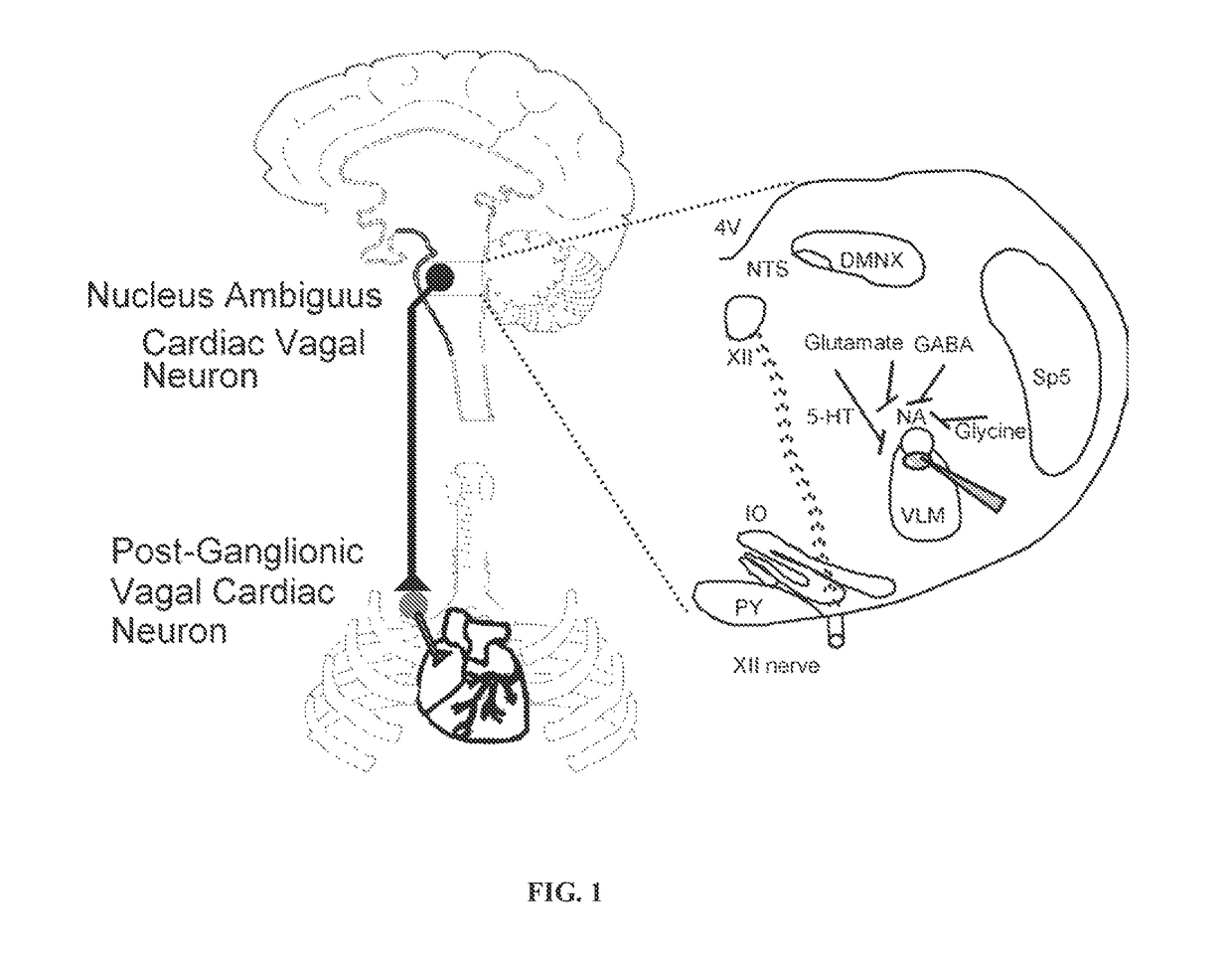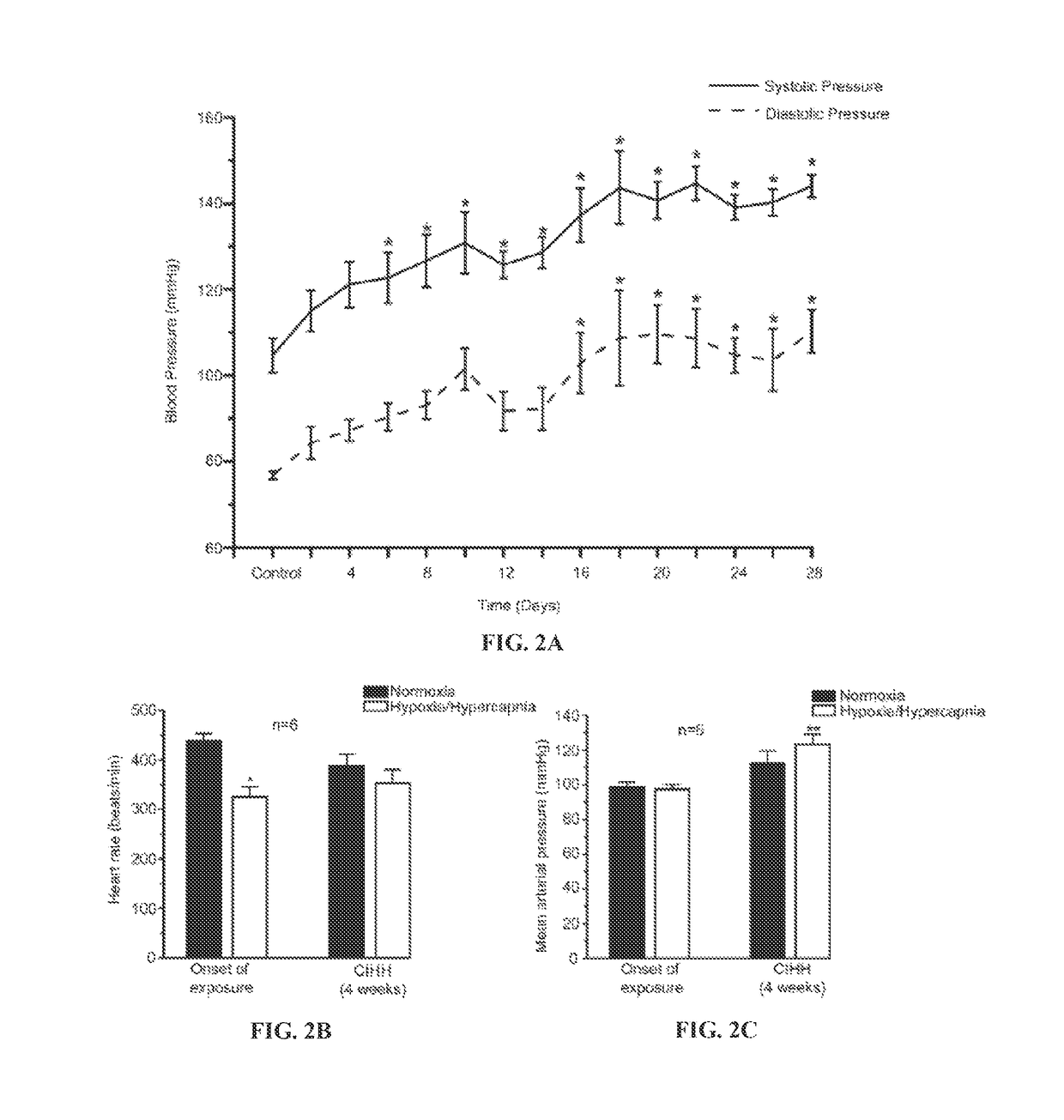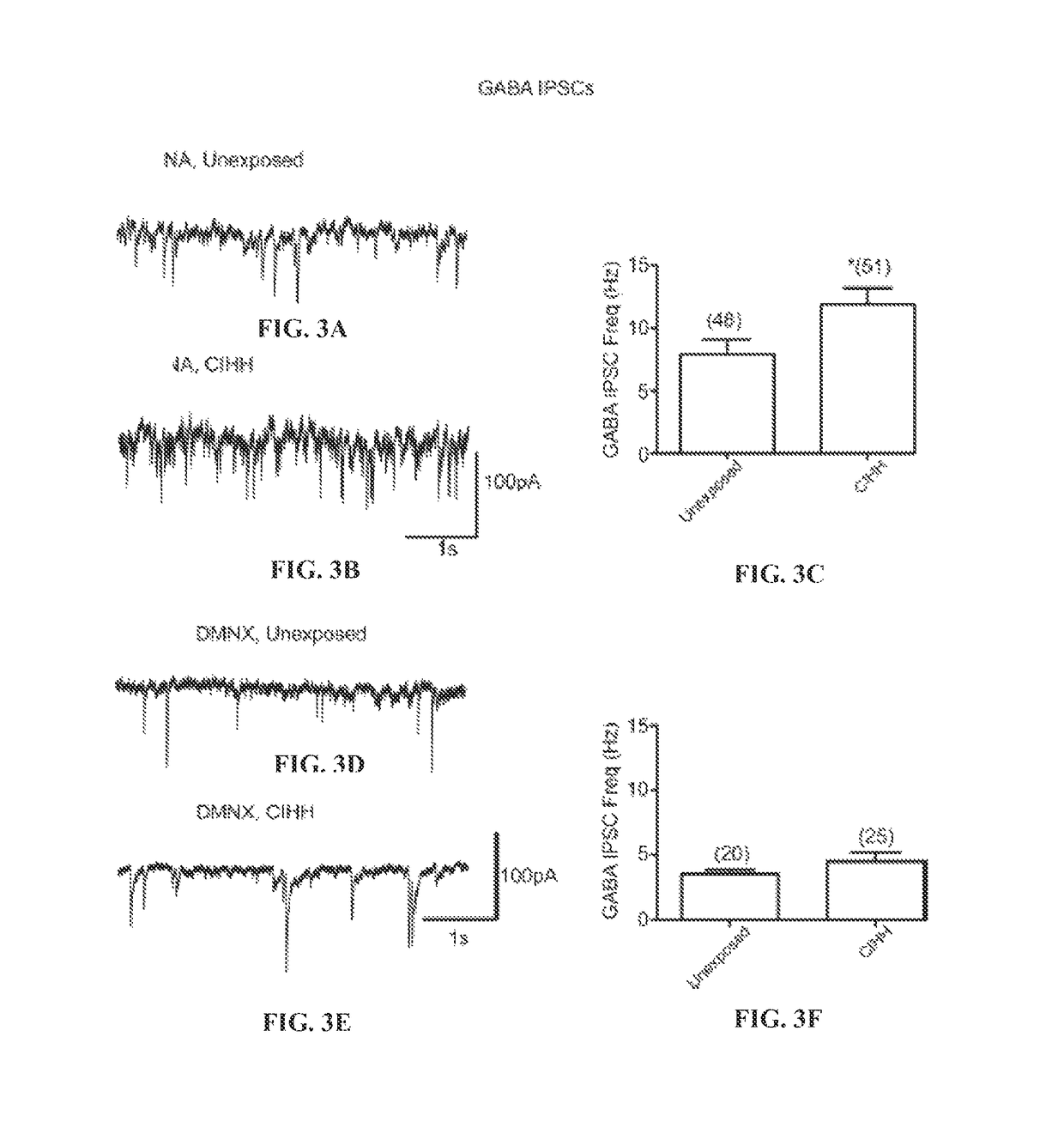Oxytocin improves treatment of obstructive sleep apnea
a technology of obstructive sleep apnea and oxytocin, which is applied in the direction of pharmaceutical active ingredients, pharmaceutical delivery mechanisms, peptide/protein ingredients, etc., can solve the problems of less known regarding the function and role of neurotransmission, and achieve the effects of reducing the frequency, reducing the frequency of glutamatergic epscs, and reducing the amplitude of epscs
- Summary
- Abstract
- Description
- Claims
- Application Information
AI Technical Summary
Benefits of technology
Problems solved by technology
Method used
Image
Examples
example 1
[0093]Labeling of CVNs:
[0094]To obtain electrophysiological recordings from CVNs, neonatal Sprague-Dawley rats (postnatal days 2-5, Hilltop Laboratory animals Inc, Scottdale, Pa., USA) were anesthetized using hypothermia by cooling to approximately 4° C. A right thoracotomy was performed and retrograde tracer X-Rhoda-mine-5-(and-6)-isothiocyanate (Invitrogen, USA) was then injected into the fat pads at the base of the heart to retrogradely label CVNs (Mendelowitz & Kunze 1991). The animals were then allowed to recover until they were 3-4 weeks old.
[0095]Telemetry Implantation:
[0096]To record blood pressure and heart rate, male Sprague-Dawley rats, 3-4 weeks of age, were anesthetized using isoflurane (2-4%) and a HD-X 1 pressure transmitter was implanted (Data Sciences International, St Paul, Minn., USA) with its catheter inserted into the abdominal aorta to record pressure and EKG leads were attached subcutaneously to obtain EKG recordings and heart rate. All rats with telemetry dev...
example 2
CIH / H on Blood Pressure
[0121]Adult rats (4 weeks old) were exposed to CIH / H for 8 hours and to normal air during the remaining 16 hours for 3 weeks as explained above. Blood pressure and heart rate was examined before and throughout 28 days of CIH / H exposure. After 4 weeks of CIH / H, systolic and diastolic pressure increased to hypertensive levels (from a systolic pressure of 105±4.0 mmHg at the onset of CIH / H to 144±3.0 mmHg after 28 days of CIH / H, n=6; p<0.05; One way ANOVA, and diastolic pressure increased from 77±1.0 mmHg to 110±5.0 mmHg after 28 days of CIH / H, n=6; p<0.05; One way ANOVA), see FIG. 2A.
example 3
Evoked Blood Pressure and Heart Rate Responses at the Start and End of CIH / H Exposure
[0122]At the beginning of the 28 days of CIH / H exposures, during a single exposure to H / H, heart rate decreased by 25% (438±15 beats / min in normoxia and 325±21 beats / min in acute H / H; n=6; p0.05; paired t-test). However, at the end of 4 weeks of CIH / H exposure, acute H / H evoked a significant increase in blood pressure (112±7 mmHg in normoxia and 123±5 mmHg in acute H / H; n=6; p0.05; paired t-test), see FIGS. 2B and 2C.
PUM
| Property | Measurement | Unit |
|---|---|---|
| time | aaaaa | aaaaa |
| pH | aaaaa | aaaaa |
| thickness | aaaaa | aaaaa |
Abstract
Description
Claims
Application Information
 Login to View More
Login to View More - R&D
- Intellectual Property
- Life Sciences
- Materials
- Tech Scout
- Unparalleled Data Quality
- Higher Quality Content
- 60% Fewer Hallucinations
Browse by: Latest US Patents, China's latest patents, Technical Efficacy Thesaurus, Application Domain, Technology Topic, Popular Technical Reports.
© 2025 PatSnap. All rights reserved.Legal|Privacy policy|Modern Slavery Act Transparency Statement|Sitemap|About US| Contact US: help@patsnap.com



